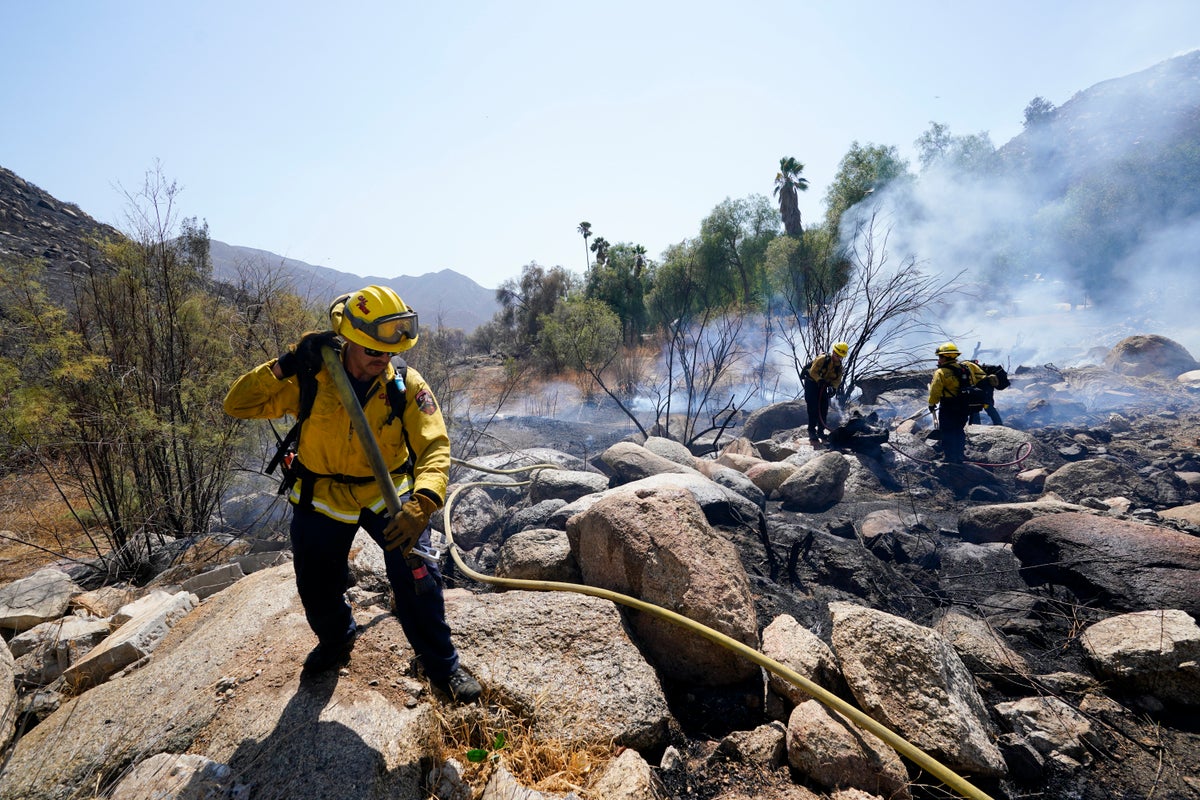
A fast-moving fire in Northern California threatened hundreds of homes Friday and authorities ordered at least 5,000 residents across three communities to leave immediately.
Residents of the towns of Weed, Lake Shastina and Edgewood in Siskiyou County were told to evacuate after the blaze spread to 500 acres in about an hour, the Siskiyou Sheriff's Office said in a statement.
Photos posted on social media showed massive flames in the town of Weed, about 70 miles north of the city of Redding.
In Southern California, firefighters were making progress Friday against two big wildfires despite dangerously hot weather.
Containment of the Route Fire along Interstate 5 north of Los Angeles increased to 37% and it remained at just over 8 square miles (21 square kilometers) in size, a California Department of Forestry and Fire Protection statement said.
Firefighters were focusing on mopping up hotspots and building more containment lines, trying to get most of the hard work done before the midday heat, Cal Fire said.
California is in the grip of a prolonged heat wave. Temperatures have been so high that residents have been asked for three consecutive days to conserve power during late afternoon and evening hours when solar energy declines.
On Wednesday, seven firefighters working the Route Fire in triple-digit temperatures had to be taken to hospitals for treatment of heat illnesses. All were released.
“Excessive heat, low humidity and steep terrain will continue to pose the biggest challenge for firefighters,” Cal Fire said.
The tally of destroyed structures remained at two, and all evacuation orders were lifted.
In eastern San Diego County, the Border 32 Fire remained at just under 7 square miles (18 square kilometers) and containment increased to 20%.
More than 1,500 people had to evacuate the area near the U.S.-Mexico border when the fire erupted Wednesday. The San Diego County Sheriff's Department began letting some people back into the area Thursday evening.
Two people were hospitalized with burns. Three homes and seven other buildings were destroyed.
Scientists say climate change has made the West warmer and drier over the last three decades and will continue to make weather more extreme and wildfires more frequent and destructive.







